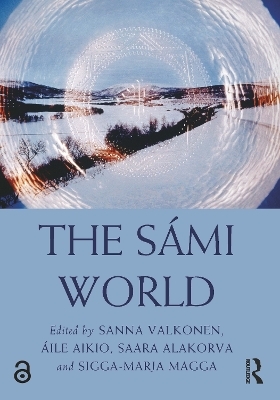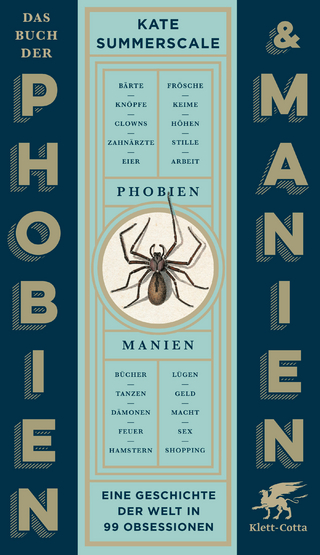
The Sámi World
Routledge (Verlag)
978-1-032-26324-3 (ISBN)
The chapters examine a variety of social and cultural practices, and consideration is given to environment, legal and political conditions and power relations. The contributions by a range of experts of Sámi studies and Indigenous scholars are drawn from across the Sápmi region, which spans from central Norway and central Sweden across Finnish Lapland to the Kola Peninsula in Russia. Sámi perspectives, concepts and ways of knowing are foregrounded throughout the volume. The material connects with wider discussions within Indigenous studies and engages with current concerns relating to globalization, environmental and cultural change, Arctic politics, multiculturalism, postcolonialism and neoliberalism.
The Sámi World will be of interest to scholars from a number of disciplines, including Indigenous studies, anthropology, sociology, geography, history and political science.
Sanna Valkonen is a Sámi scholar and Professor of Sámi Research at the University of Lapland, Finland. She is co-editor of Knowing from the Indigenous North: Sámi Approaches to History, Politics and Belonging (Routledge, 2018). Áile Aikio is a Sámi scholar and doctoral candidate of sociology at the University of Lapland, Finland. In her PhD research, Aikio examines indigenization of the museum. Saara Alakorva is a Sámi scholar, doctoral candidate of political sciences, and university teacher of Arctic world politics at the University of Lapland, Finland. In her PhD research, Alakorva studies Sámi political history and contemporary Sámi political thinking. Sigga-Marja Magga is a Sámi scholar and post-doctoral researcher at the University of Lapland, Finland. Her work focuses on duodji handicraft and duodji epistemes.
Introduction to the Sámi World; Part I: Guođohit – Living with/in nature; 1. A Window into Vanishing Sámi Culture? Visual Representations of Sáminess in the Shared Siida Exhibition by Sámi Museum Siida and Northern Lapland's Nature Centre; 2. Gákti on the Pulse of Time: The Double Perspective of the Traditional Sámi Dress; 3. Skolt Saami Leuʹdd: tradition as a Medium of Individual and Collective Remembrance; 4. Trickster Blurring Expectations and Values of Sámi Community: Author Jovnna-Ánde Vest Reshaping Sámi Reminiscence Literature; 5. The River Breaks – and Freezes: Sámi Women in Laestadianism; 6. From History to Herstory of the Sámi World: Proposing a Feminist Approach to the Settlement History of Finnish Lapland; 7. Caught in the State’s Net? Ecologies of Care in Deanuleahki, Sápmi; 8. Defining the Sámi Cultural Environment: New Perspectives for Fieldwork; 9. Frustrated Caretakers: Sámi Egg Gatherers and Cloudberry Pickers; 10. Sámi Food Culture: Traditional Practices and Contemporary Challenges; 11. Understanding Sámi Reindeer Herders’ Knowledge Systems of Snow and Ice; 12. Issues of Sámi Representation in Finnish Tourism: A Quest for Authenticity; Part II: Gierdat – Living through/in societal ruptures; 13. The Futures of Sami languages; 14. Residential schooling of the Sámi in the Soviet Union: Historical development and Impacts; 15. The Sámi in the Spiral of Negative Social Developments of the Soviet North; 16. Changing States, Changing Sámi? Framing the State and the Sámi in Studies of History in Finland and Norway, 1923–1954; 17. The Sámi Flag(s): From a Revolutionary Sign to an Institutional Symbol; 18. Who Are "We, the People"? A Comparative Analysis of the Right to Register in the Sámi Electoral Roll in Finland, Norway, and Sweden; 19. Toxic Speech, Political Self-Indigenization and the Ethics and Politics of Critique: Notes from Finland; 20. The History and Current Situation of Discrimination of the Sámi; 21. Municipal Politics in the Sámi Homeland in Finland; 22. The Stockholm Sámi Administrative Area and Indigenous Resurgence; 23. The Role of the Sámi Media in Democratic Processes: The Arctic Railway in Yle Sápmi and NRK Sápmi; 24. The Áltá and Deatnu Conflicts and the Articulations of Nature; Part III: Duostat - Envisioning Sámi futures; 25. The History of the Hybrid Sámi Media System; 26. ‘It Should be her Language’. New Speakers of Sámi Languages Transmitting the Language to the Next Generation; 27. Ládjogahpir Rematriated—Decolonisation of the Sámi Women’s Hat of Pride; 28. Sámi Research Ethics Under Construction; 29. Driving Around with Aunt Máret: Historical Consciousness of the Sámi in Transition; 30. The Characteristics and Legal Status of Sámi Legal Tradition and Law; 31. Commemorating Continuity: Reconciling Material Representations in Sääʹm Land; 32. Saìmi Storytelling through Design; 33. Sámi Feminist Conversations; 34. Queer Indigenous World-Making in the Sámi TV Comedy Njuoska bittut; 35. The Activism of Having Fun: Young Sámi in Urban Areas of Norway and Sweden; Epilogue: Ways of Being in the World
| Erscheinungsdatum | 15.06.2022 |
|---|---|
| Reihe/Serie | Routledge Worlds |
| Zusatzinfo | 6 Tables, black and white; 32 Halftones, black and white; 32 Illustrations, black and white |
| Verlagsort | London |
| Sprache | englisch |
| Maße | 174 x 246 mm |
| Gewicht | 453 g |
| Themenwelt | Geschichte ► Teilgebiete der Geschichte ► Kulturgeschichte |
| Naturwissenschaften ► Geowissenschaften ► Geografie / Kartografie | |
| Sozialwissenschaften ► Ethnologie | |
| Sozialwissenschaften ► Soziologie | |
| ISBN-10 | 1-032-26324-5 / 1032263245 |
| ISBN-13 | 978-1-032-26324-3 / 9781032263243 |
| Zustand | Neuware |
| Haben Sie eine Frage zum Produkt? |
aus dem Bereich


